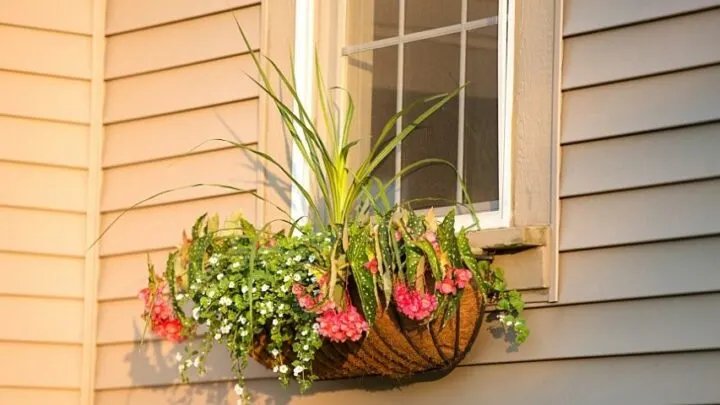Coco liners, also known as coconut fiber pot liners, are made from the husk of ripe coconuts.
Not only are these liners used in hanging baskets for planting, but they are also used for making brushes and floor mats.
Coco liners are greatly beneficial for a lot of reasons.
Firstly, since they are fibrous, they can hold a lot of water in them, allowing the associated plant to absorb the water in their roots for as long as possible without letting the water drip outside of the liner.
Secondly, these liners are porous, which means that they are good for the aeration of the soil. While using a coco liner, you’ll never worry about root rots.
Lastly, these coco liners have a neutral pH of about 6.0 to 6.7. The fibers of coconut liners are abundant in phosphorus, potassium, and magnesium.
Not only that, but these fibers also contain antifungal properties, which will protect your hanging plants against any infections.
Here are the 20 best plants that you can grow using coco liners.
20 Best Plants for Coco Liners
- Golden Pothos (Epipremnum aureum)
- Wandering Jew (Tradescantia zebrina)
- English Ivy (Hedera helix)
- Polka dot Begonia (Begonia maculata)
- Creeping Jenny (Lysimachia nummularia)
- Wav Vines (Hoya)
- Donkey Trails (Sedum morganianum)
- String of Hearts (Ceropegia woodii)
- String of Dolphins (Senecio peregrinus)
- Lipstick Plant (Aeschynanthus)
- Radiator Plants (Peperomia)
- Heart Leaf Philodendron (Philodendron hederaceum)
- Strawberry Begonia (Saxifraga stolonifera)
- Creeping Charlie (Glechoma hedercea)
- Watermelon Pellionia (Pellionia pulchra)
- Geraniums (Pelargoniums)
- Fan Flowers (Scaevola aemula “Blue Wonder”)
- Nasturtium (Tropaeolum)
- Million Bells Mini Petunia Trailing Petunia (Calibrachoa)
- Sweet Alyssum (Lobularia maritima)
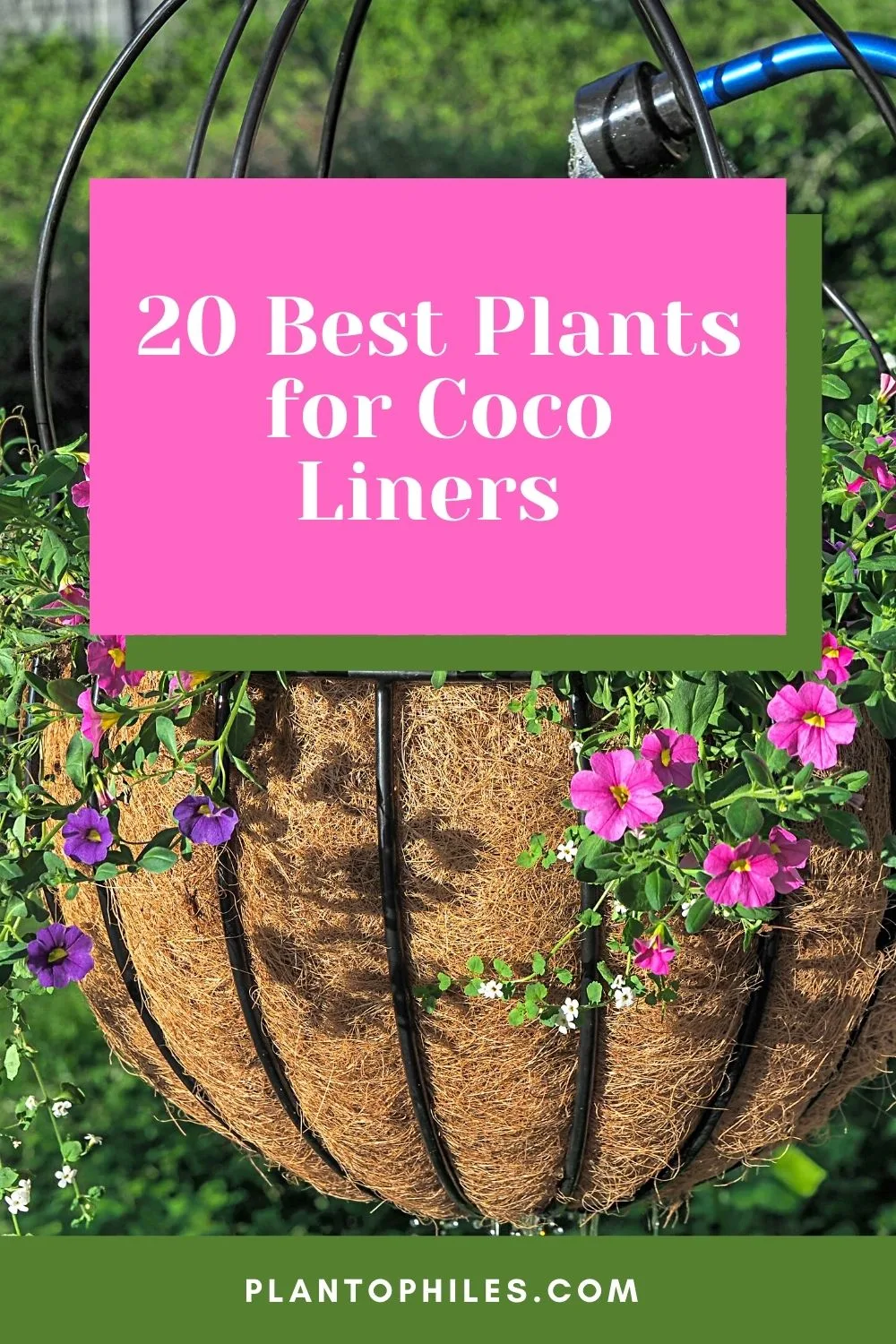
20 Best Plants for Coco Liners
Table of Contents
Best Plants for Coco Liners
1. Golden Pothos (Epipremnum aureum)
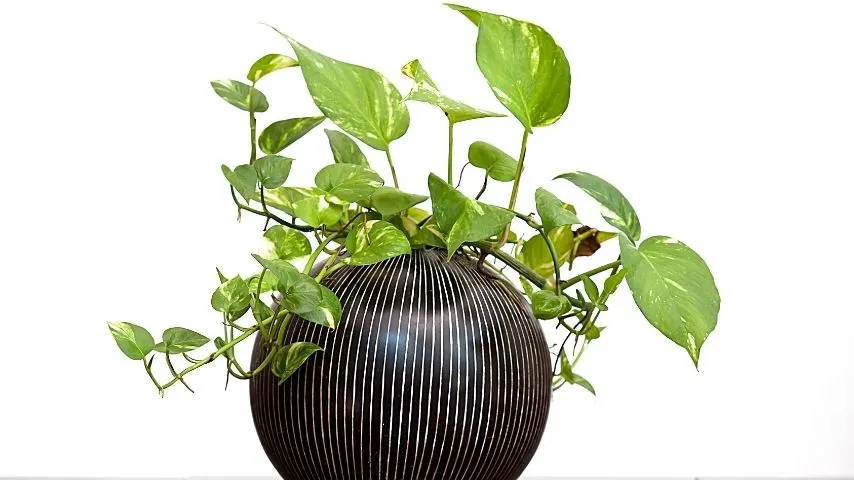
The Golden Pothos (Epipremnum aureum) is the first plant choice for planting in containers with coco liner
When you are looking for a plant that you can grow in hanging baskets with a coco liner in them, golden pothos are the first choice you will have.
They can grow in shady areas, so you can also hang your baskets indoors.
Golden pothos needs room temperatures and low humidity levels; therefore, planting them indoors in a coconut fiber-lined basket is the best idea.
2. Wandering Jew (Tradescantia zebrina)
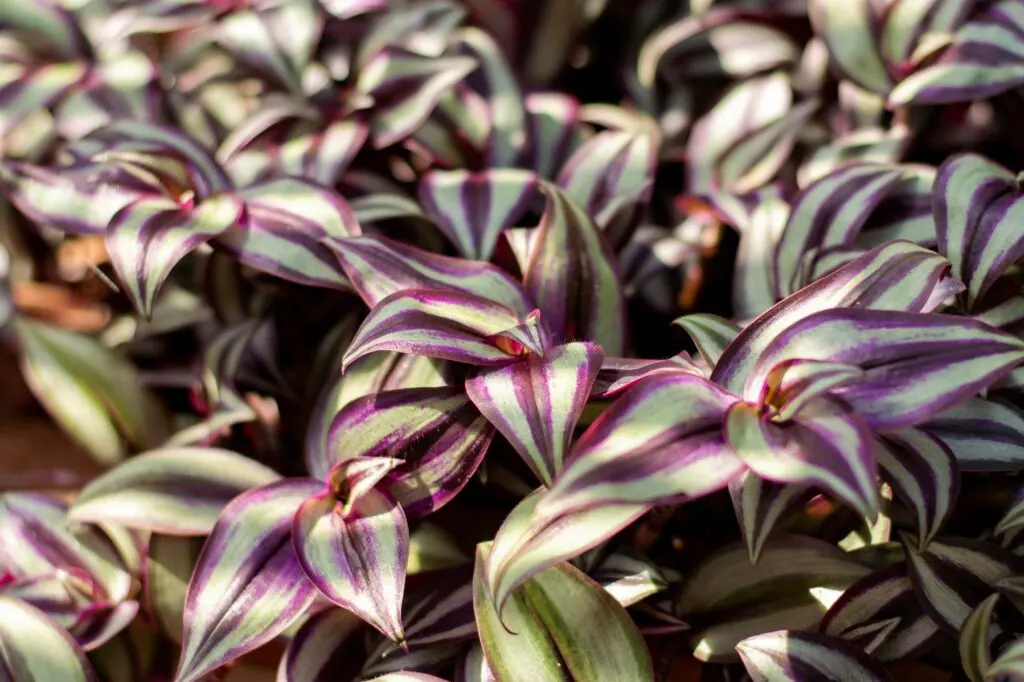
The Wandering Jew (Tradescantia) is another attractive houseplant you can grow in a container with coco liner
Also known as Indian Paint or Wandering Jew, the Wandering Jew is a very attractive houseplant known for its red and green foliage.
This plant is very tough according to the University of Wisconsin. and can be grown in USDA hardiness zones 9-11.
To plant it in a coco liner, take a hanging basket suitable for your plant’s size.
Once you have chosen the basket for your plant, take a sheet of coco liner and gently push it inside so that it fits every corner of the basket.
After that, moisten the coco liner with a spray bottle filled with water. Once the coco liner is all settled inside the basket and moistened with water, you can add your potting mix.
Apart from the red and green leaves, tradescantia also produces flowers of many colors such as pink, white, and purple.
3. English Ivy (Hedera Helix)
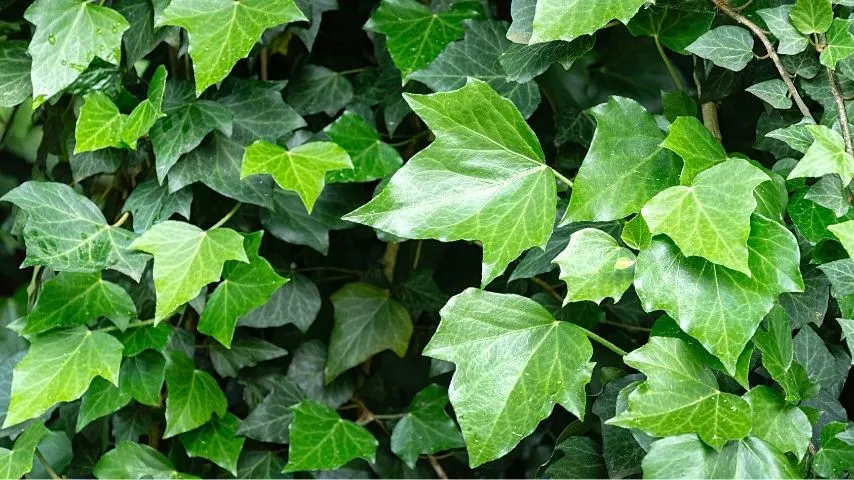
Planting English Ivy (Hedera Helix) in a coco-lined basket will help boost its growth
If you want to see your plants growing within no time, then you should definitely grow English ivy in your coco-lined basket.
These plants grow so quickly that within a few months, their stems will be flowing out of their basket, giving your garden a very vibrant look.
Hedera Helix has air purifying properties, which only makes it the ideal choice to hang in your bedroom or living room.
This plant will purify the space around you and fill it with so much greenery.
4. Polka Dot Begonia (Begonia Maculata)

If you plant the Polka Dot Begonia (Begonia Maculata) in a container with coco liner, it will have enough water for 3 days
Begonias are a perfect choice for places that do not get enough sunlight.
They are very low maintenance, so you do not have to water them every day or establish a strict fertilizing schedule.
Since you are planting them in a coco liner, it will have enough moisture trapped inside its fibers to support the begonias for at least three days.
Make sure that the soil you are using in your coco-lined basked is rich in organic matter. This will ensure that the plant produces bright, large, and showy flowers.
5. Creeping Jenny (Lysimachia nummularia)
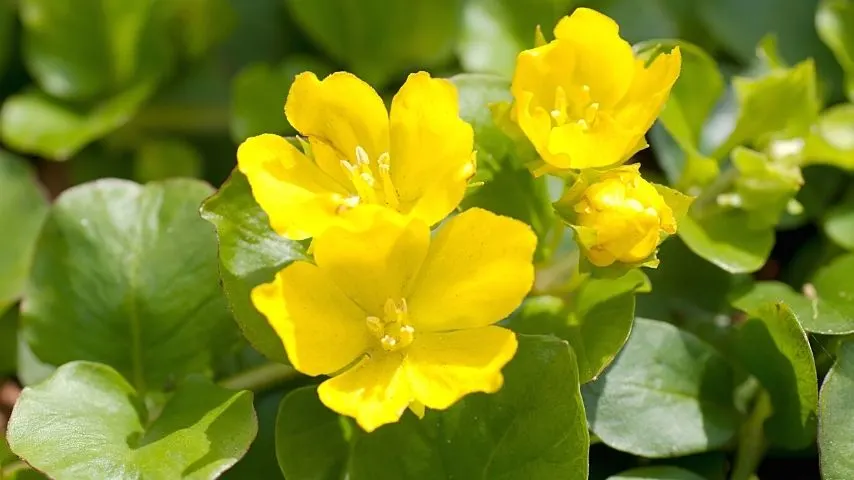
If you plant the Creeping Jenny (Lysimachia nummularia) in a hanging basket with coco liner, make sure its potting mix contains perlite in it
If you want to plant Lysimachia in a hanging basket, you should make sure that the potting mix has enough perlite mixed in it.
This is because the great quantity of leaves on the stems of this plant requires constant moisture.
Using perlite will ensure that enough water is trapped inside the coco liner so as to support the leaves and prevent them from drooping.
6. Wax Vines (Hoya)
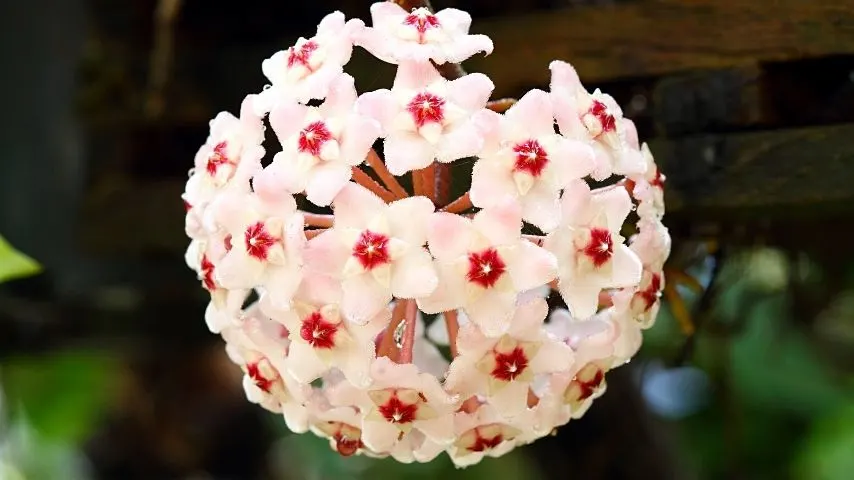
As Wax Vines (Hoya) are popular choices for planting in hanging baskets, you can line their containers with coco liners for additional drainage
Wax Plants are popular for being planted in hanging baskets because the long vines of this plant flow out and reach the ground.
Although it is rare for this plant to produce flowers often, you may be rewarded with beautiful white and pink small waxy flowers that cover the entire basket.
Since you are planting wax vines inside a coco-lined basket, you do not have to provide additional drainage for this plant.
The coco liners already have some holes in the bottom, which ensures the soil aeration.
7. Donkey Tails (Sedum morganianum)
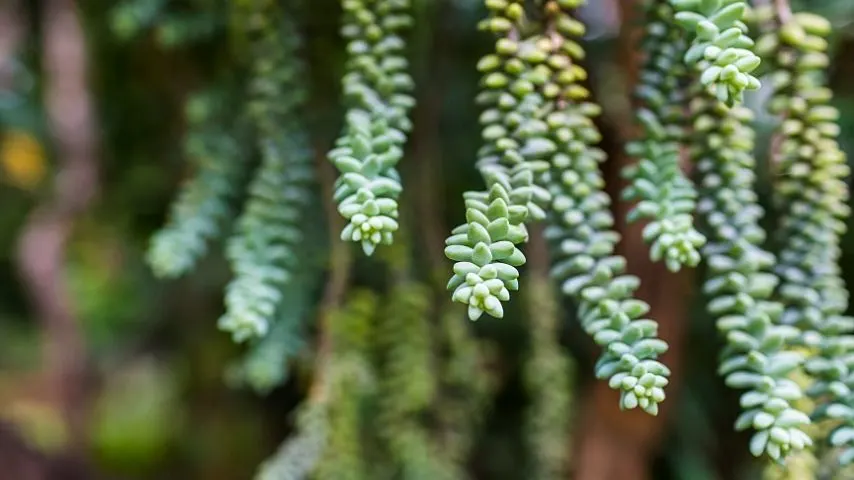
Donkey Tails (Sedum morganianum) planted in a hanging basket with coco liner will have faster growth
Countless plants can give an absolutely stunning ambiance to your space.
You can hang Donkey Tails in baskets, indoors or outdoors, they are bound to grow rapidly if they have a firm layer of coco liner inside them.
With thick and fleshy gray-green leaves, this plant is also known as Burro’s tails. It is a succulent plant, and its vines hide the entire basket beautifully.
It is a drought-resistant plant, which means that there will be no consequences if you do not water it every day.
While you don’t have to worry about watering the succulent very often, you may have to worry about over-watering.
In most cases, the death of this plant occurs due to watering too much in very short periods. Therefore, extreme care is needed not to water it more than once a week.
8. String of Hearts (Ceropegia woodii)
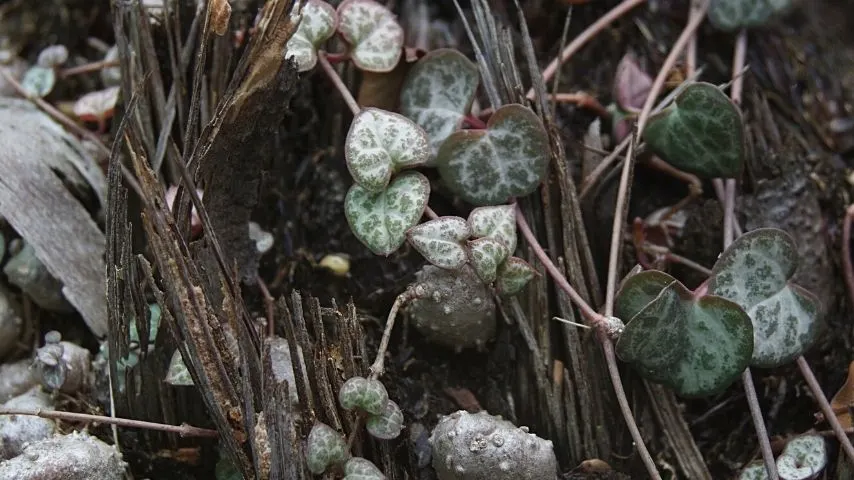
Plant the String of Hearts (Ceropegia woodii) plant in a container with coco liner and place it in a sunny location
This plant is called Strings of Heart due to its heart-shaped leaves on extremely thin stems.
There are other names for this plant too, which include “chains of hearts”, “sweetheart vine”, or “hearts on a string.”
The best location for hanging this plant is in a sunny area. In a bright spot, this plant’s heart-shaped leaves will become variegated.
9. String of Dolphins (Senecio peregrinus)
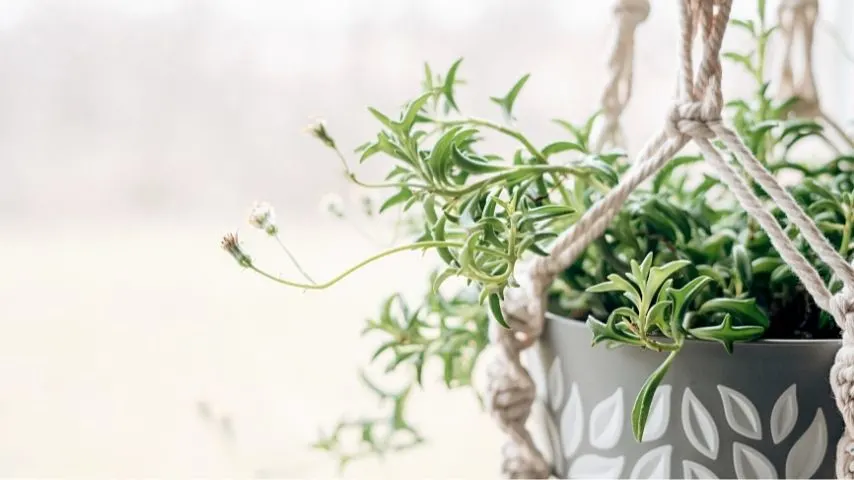
String of Dolphins (Senecio peregrinus) is a striking plant that you can plant in a container with coco liner
You will be surprised to see this plant’s leaves growing at full speed.
Their leaves are exactly similar to the shape of a dolphin, owing to which this plant is called the string of dolphins.
This plant is extremely difficult to find due to its unusually striking appearance. Dolphins seem to be jumping out of the sea on the leaves of this plant.
If you are lucky and take good care of this unique plant, you might be rewarded with small and delicate flowers.
10. Lipstick Plant (Aeschynanthus)
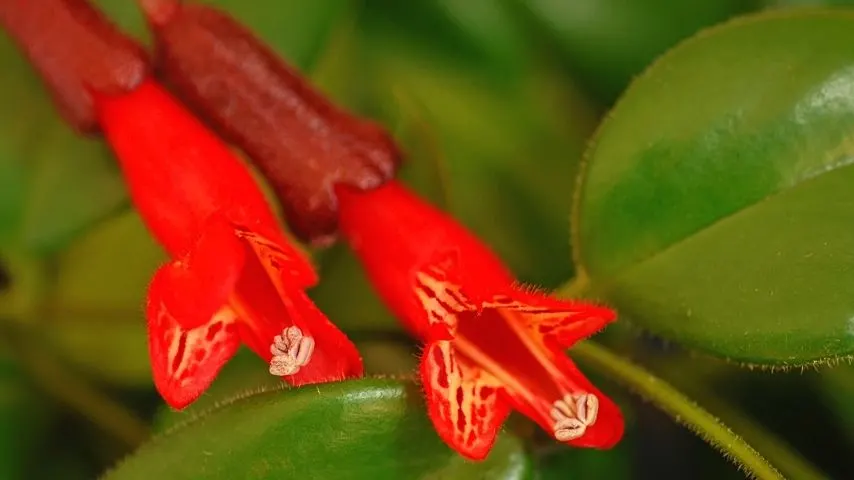
Since the Lipstick Plant (Aeschynanthus) wants its potting mix moist at all times, it helps if you line its container with coco liners
The Lipstick plant is so-called because it produces long tubular flowers that are orange, red, or pink in color.
These flowers have the shape of lipstick, combined with shiny and green waxy lanceolate leaves.
Lipstick plants grow best in a sunnier spot, where it gets lots of light day in and day out. Moreover, it would be best if you made sure that the soil of the potting mix is moist at all times.
This plant is prone to burned leaves and infections if it does not get enough water.
11. Radiator Plants (Peperomia)

Radiator Plants (Peperomia) are great plant options for filling up the vertical space of a wall; just make sure it’s container’s line with coco liners
If you are short of space and want to have a variety of plants in your house or in the garden, then this plant is for you.
Radiator plants serve as a great choice for compact plants, as they have very small leaves and extremely long stems that fill the vertical space on the wall.
You can plant Peperomia outdoors because if you try to grow them indoors, they will never bloom flowers.
12. Heart Leaf Philodendron (Philodendron hederaceum)
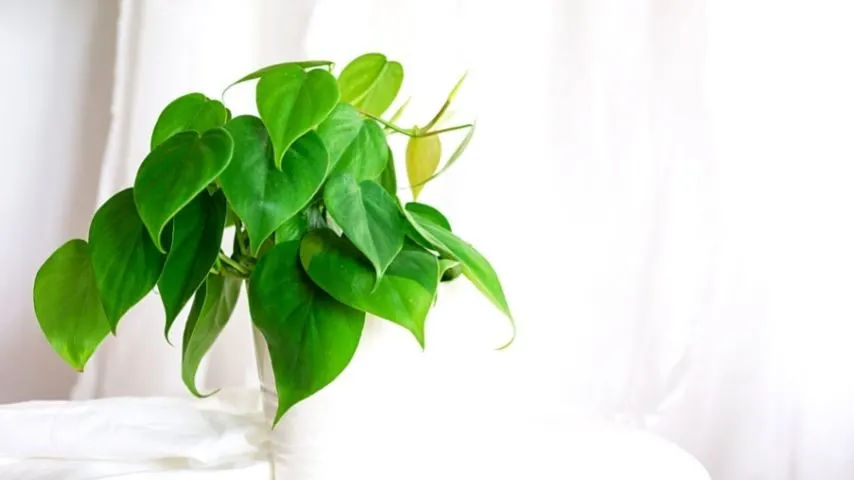
Heart Leaf Philodendron (Philodendron Hederaceum) is one of the most popular Philodendrons that are planted in hanging baskets, best lined with coco liners
Philodendrons are very famous for their plantation in hanging baskets.
Due to the large and showy leaves, it is perhaps the best idea to plant them individually on a wall so that they can take over the entire space without being interrupted by other plants.
As the name itself implies, this plant has heart-shaped leaves. It has dark green, bright and glossy leaves that alter the boring ambiance of a space into a lively and pleasant one.
You should keep this plant in bright but not direct sunlight. This may scorch the leaves and result in discoloration of the leaves.
13. Strawberry Begonia (Saxifraga stolonifera)

Strawberry Begonia (Saxifraga stolonifera) loves being in warm and humid places, hence, lining their containers with coco liners helps
The most remarkable feature of this plant is the bright red color that is only visible on the underside of the leaf and not the upper part.
This plant produces small white and delicate flowers that last only a short time in the blooming season.
The right conditions for planting strawberry begonia are a warm and humid environment. Make sure that proper ventilation’s observed if you are growing it indoors.
14. Creeping Charlie (Glechoma Hedercea)
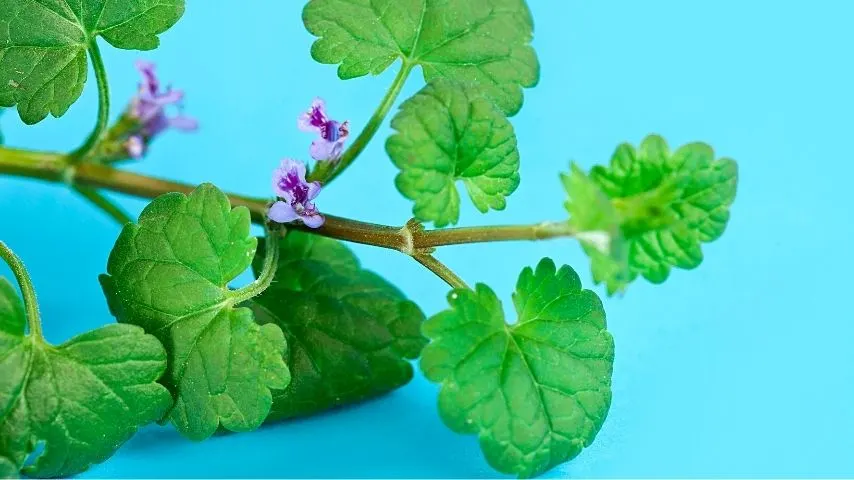
The clustered leaves of the Creeping Charlie (Glechoma Hedercea) plant will be supported by the coco liner in its container
Glechoma Hederecea, also more commonly known as the creeping Charlie, is so-called due to its dense small leaves covering the entire basket.
This is a perfect choice for a coco-lined basket as its thick cluster of leaves will constantly be supported by the moisture trapped inside the fibers of the coco liners.
In the season of spring, funnel-shaped flowers that are blue in color bloom to add some more variety to the plant.
15. Watermelon Pellionia (Pellionia pulchra)
Watermelon begonia shies away from the sun, which means that you would witness immense growth only if you place them in a shady spot with very little to no sunlight.
With proper care, this plant grows to have dense and thick stems with green leaves that have a pattern of white or purple veins on them.
This plant thrives in high humidity, so make sure that you mist it regularly or use a humidifier.
16. Geraniums (Pelargoniums)

You can place the Geraniums (Pelargoniums) in an area with partial to full sunlight if you’re using coco-lined hanging baskets
Planted in a coco-lined hanging basket, geraniums thrive in full to partial sunlight. They love to be under the sun for a minimum of six to eight hours.
It will be perfect if you hang them on a south-facing balcony as it would get plenty of afternoon sunlight.
It produces brilliant pink flowers that open up when exposed to direct sunlight.
In the winter season, it is prone to getting infections and stunted growth; therefore, it is ideal to bring them indoors and place them in a spot where they can get at least some sunlight every day.
17. Fan Flowers (Scaevola Aemula “Blue Wonder”)
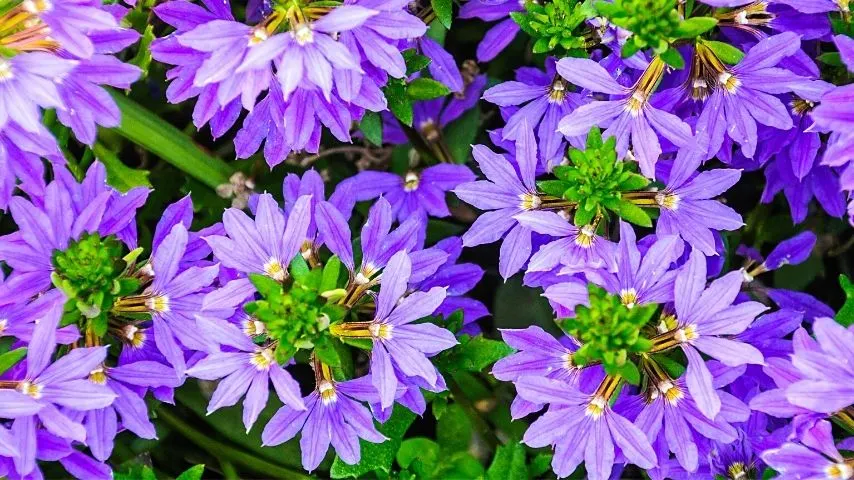
Fan Flowers (Scaevola Aemula Blue Wonder) are drought-resistant and wouldn’t need regular watering, which can be supported by lining its container with coco liners
Fan flowers are so-called because they produce tiny blue-colored flowers in a similar shape as that of a fan.
They are also drought-tolerant, so you do not have to worry about watering them every once in a while. They will do good on their own without much care and maintenance.
Moreover, they also do not require deadheading, saving much-needed time and effort.
18. Nasturtium (Tropaeolum)
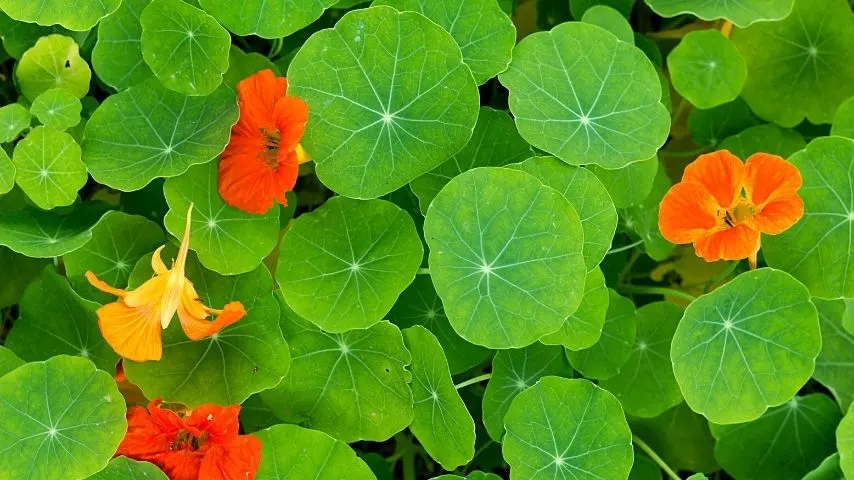
Another low-maintenance plant that you can grow in containers lined with coco liners is the Nasturtium (Tropaeolum)
The USDA growing zones for nasturtium are between 4 to 8, and they are annual plants, completing their life cycle once a year.
Moreover, they are extremely low maintenance, as they do not require fertile soil or a strict watering schedule.
You can place them on a south or a north-facing balcony because they can survive in both shady and sunny places.
19. Million Bells Mini Petunia Trailing Petunia (Calibrachoa)
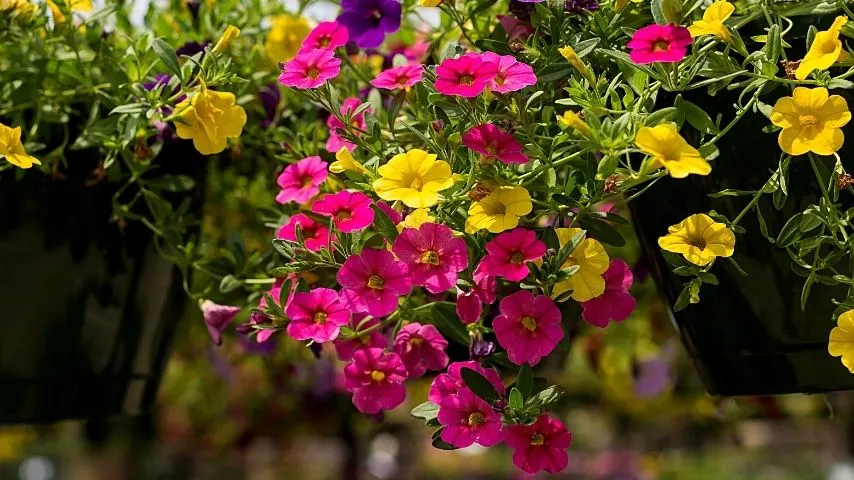
If you want flowers trailing from your coco-lined basket, the Million Bells Mini Petunia Trailing Petunia (Calibrachoa) is a great choice
Make sure to plant this brilliant calibrachoa in late spring so that you can see the flowers blooming in clusters until fall.
This plant produces tiny pink flowers that take over the entire hanging basket.
20. Sweet Alyssum (Lobularia maritima)
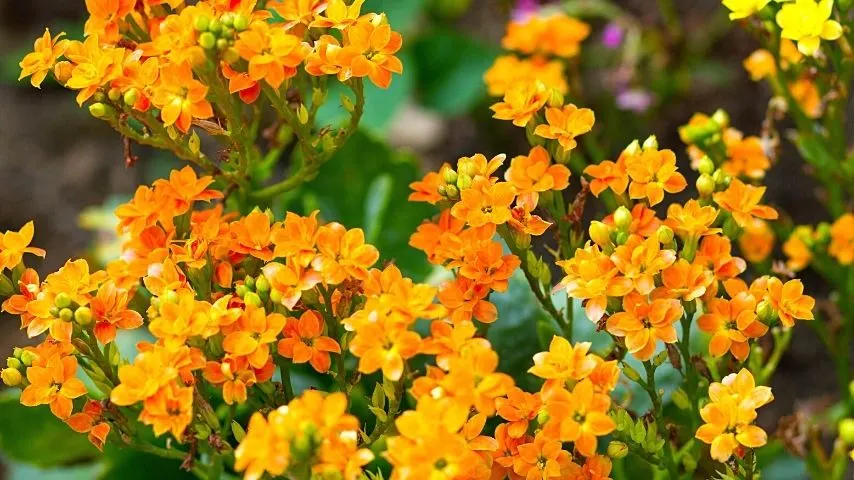
Sweet Alyssum (Lobularia maritima) is another heat and drought-resistant plant you can grow in baskets lined with coco liners
Known for being adaptable to a great number of regions and weathers in the United States, this plant is heat-resistant and drought-resistant.
It produces a small white flower with a unique and pleasant smell that attracts numerous insects and butterflies for pollination.
Conclusion on Best Plants for Coco Liners
Coco liners make it a lot easier to plant and grow your favorite flowers and vegetables, owing to their great number of benefits.
They are useful, specifically for growing plants in hanging baskets, because they retain a lot of water for the plant to use later.

Daniel has been a plant enthusiast for over 20 years. He owns hundreds of houseplants and prepares for the chili growing seasons yearly with great anticipation. His favorite plants are plant species in the Araceae family, such as Monstera, Philodendron, and Anthurium. He also loves gardening and is growing hot peppers, tomatoes, and many more vegetables.

